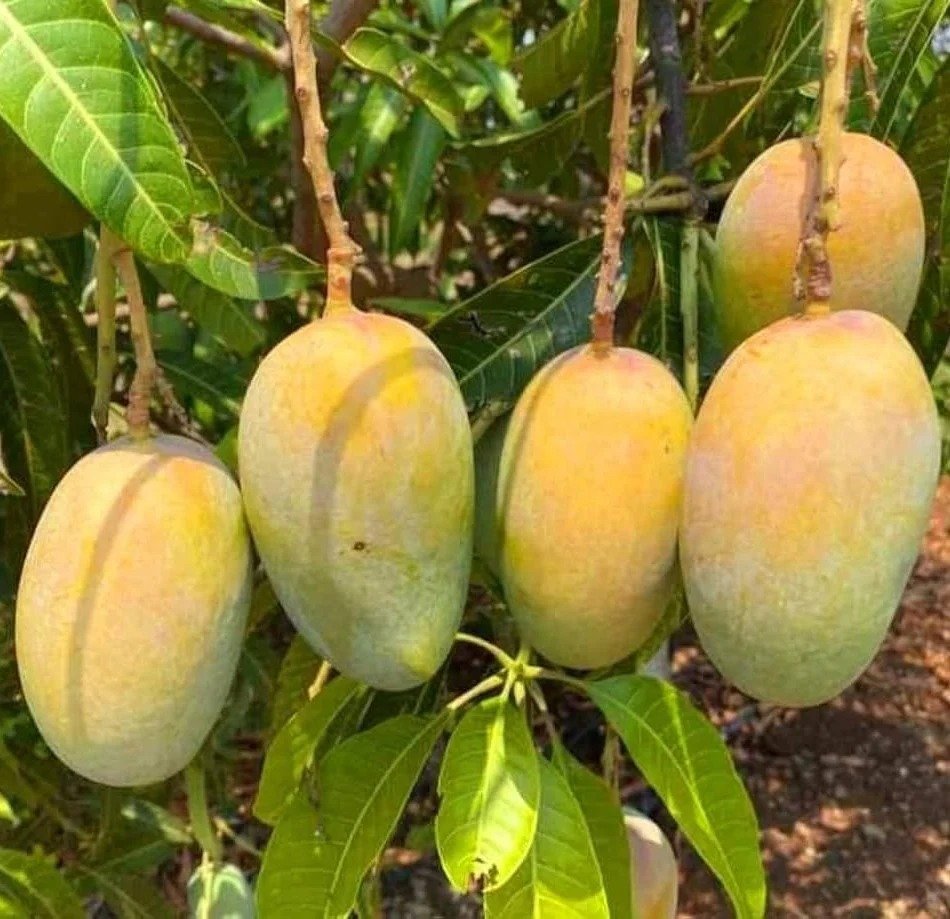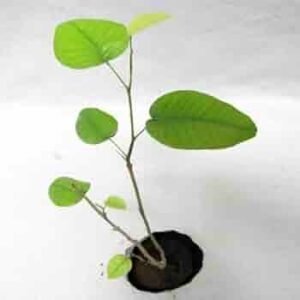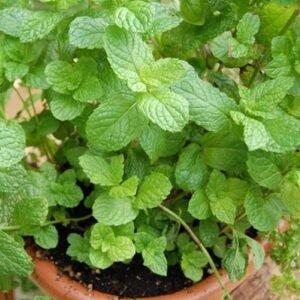Description
MANGO VARIETIES: KESAR, HAPUS (ALPHONSO), AND IMAM PASAND – A DETAILED OVERVIEW
The mango (Mangifera indica) is often referred to as the “King of Fruits” in India due to its rich flavor, sweetness, and cultural significance. Among the hundreds of mango cultivars grown across the country, Kesar, Hapus (Alphonso), and Imam Pasand stand out for their unique taste profiles, commercial importance, and regional heritage. Each variety is treasured not only for its luscious fruits but also for the legacy and identity it carries from its region of origin. This article delves into a comprehensive description of the plants of these three mango varieties, focusing on their morphology, cultivation practices, climate needs, fruit characteristics, and economic relevance.
1. KESAR MANGO PLANT
Origin and Background:
Kesar mango, often dubbed the “Queen of Mangoes,” originates from the Girnar Hills of Junagadh, Gujarat. The name “Kesar” (meaning saffron in Hindi) is a nod to its deep golden-orange pulp and unique aroma.
Plant Description:
Kesar mango trees are medium to large-sized, reaching heights of 10–15 meters. The canopy is moderately dense with a rounded, symmetrical crown. The leaves are lanceolate, dark green, and leathery, typically 15–35 cm long. The plant blooms during late winter to early spring, producing panicles of small, yellowish-white flowers.
Climate and Soil:
Kesar thrives in subtropical to tropical climates with hot summers and mild winters. It grows well in well-drained, loamy or alluvial soils with pH between 5.5 and 7.5. The Gir region’s specific microclimate contributes significantly to the fruit’s aroma and taste.
Fruit Characteristics:
Kesar mangoes are medium-sized, weighing about 200–300 grams. The skin remains slightly green even when ripe but may develop a faint yellow blush. The flesh is fibrous-free, juicy, and vibrant saffron-colored with a sweet, slightly tangy flavor. Kesar mangoes typically mature and are harvested between May and July.
Cultivation Practices:
Propagation is generally done by grafting onto rootstocks. The trees require regular pruning, adequate irrigation (especially in the flowering and fruiting stages), and protection against pests like fruit flies and powdery mildew. Kesar is known for early bearing and consistent yields.
Uses and Market Relevance:
Kesar mangoes are extensively used in pulp production, desserts, juices, and table consumption. Gujarat has secured a Geographical Indication (GI) tag for Kesar, enhancing its export value, especially in the Gulf and European markets.
2. HAPUS (ALPHONSO) MANGO PLANT
Origin and Background:
The Alphonso mango, locally called Hapus, hails from the Konkan region of Maharashtra, especially Ratnagiri, Devgad, and Sindhudurg. It is named after Afonso de Albuquerque, a Portuguese general and military expert who introduced the grafting technique to India.
Plant Description:
The Hapus mango tree is large and vigorous, reaching up to 20 meters in height. The tree has a broad, dome-shaped canopy. Leaves are narrow, dark green, and around 20–30 cm long. The tree flowers once a year, usually from December to March.
Climate and Soil:
The ideal climate for Alphonso is coastal tropical, with moderate humidity and a well-defined monsoon season followed by a dry spell. Lateritic red soils of Konkan with good drainage and slight acidity (pH 5.5–6.5) are ideal.
Fruit Characteristics:
Alphonso mangoes are medium to large-sized (200–400 grams) with an oblong shape and a distinct beak at the tip. When ripe, the skin turns bright golden-yellow with a reddish blush. The flesh is smooth, saffron-colored, and intensely aromatic. It has a rich, sweet flavor with a hint of citrus. The fruit is fiberless and considered one of the finest in the world for its texture and taste.
Cultivation Practices:
Alphonso is propagated by grafting and requires careful management. The plant is sensitive to water stress and salt accumulation, hence needs precise irrigation and nutrient management. Flowering and fruit-setting are sensitive to weather changes, especially unseasonal rains.
Uses and Market Relevance:
Regarded as a premium export variety, Hapus is exported to countries like the UAE, UK, and the US. Its flesh is highly prized for fresh eating, mango-based sweets, and drinks. Maharashtra’s Alphonso also holds a GI tag, which protects its identity and boosts demand in international markets.
3. IMAM PASAND MANGO PLANT
Origin and Background:
Also known as Himayat or Humayun Pasand, Imam Pasand is a rare and elite mango cultivar grown primarily in Andhra Pradesh, Tamil Nadu, and Telangana. It is believed to have been a favorite in royal courts, hence the name “Pasand” (meaning favorite).
Plant Description:
The Imam Pasand mango tree is large and moderately spreading. The branches are relatively sparse compared to Alphonso, and the leaves are broader and slightly paler green. The flowering season typically starts in January and continues into February.
Climate and Soil:
The tree thrives in warm, semi-arid to tropical regions. It requires a dry climate during flowering and fruiting. Deep, fertile, well-drained soils with a slightly acidic to neutral pH are preferred. The plant is less tolerant to saline soils and water-logging.
Fruit Characteristics:
The Imam Pasand mango is known for its large size, sometimes weighing up to 600–800 grams per fruit. The skin is delicate and thin, often marked with pale green to yellow hues and occasional spots. The pulp is buttery soft, juicy, aromatic, and completely fiberless. The flavor is subtly sweet with complex floral and citrus notes, making it a connoisseur’s choice.
Cultivation Practices:
Imam Pasand trees take longer to mature and are relatively low-yielding compared to Kesar or Alphonso. They are propagated by grafting and require careful handling due to the fruit’s thin skin, which is prone to bruising. Irrigation and pest control (especially against mango hoppers and anthracnose) are critical.
Uses and Market Relevance:
Due to its exquisite taste and short season (typically late May to early June), Imam Pasand is considered a luxury mango and often sold at premium prices. It is consumed fresh and is highly sought after by gourmet markets. Though not widely exported due to its fragility, its reputation continues to grow.
Conclusion
Kesar, Hapus, and Imam Pasand mango plants represent the diversity, richness, and regional pride of India’s mango heritage. While Kesar is famed for its affordability and balanced sweetness, Alphonso stands tall as the epitome of luxury and international fame. Imam Pasand, though rarer, is revered for its exotic flavor and regal legacy.
For farmers, selecting the right mango variety depends on climate compatibility, soil health, market access, and investment capacity. Each of these mango plants requires dedicated care but offers unmatched rewards in flavor and economic potential. With proper cultivation practices and awareness of modern horticultural techniques, these iconic varieties can continue to flourish and charm the palates of mango lovers across the world.





 Gladiolus (Pink) - Bulbs (set of 10)
Gladiolus (Pink) - Bulbs (set of 10)  14.9 inch (38 cm) Plastic Hanger For Planters (Black) (set of 6)
14.9 inch (38 cm) Plastic Hanger For Planters (Black) (set of 6)  Common Mint Plant, Pudina - Plant
Common Mint Plant, Pudina - Plant 

Reviews
There are no reviews yet.